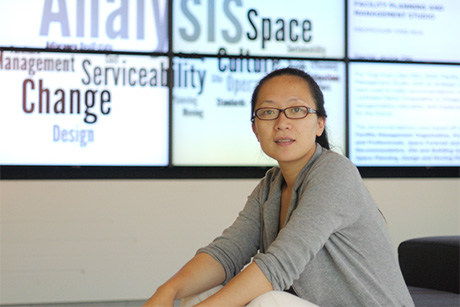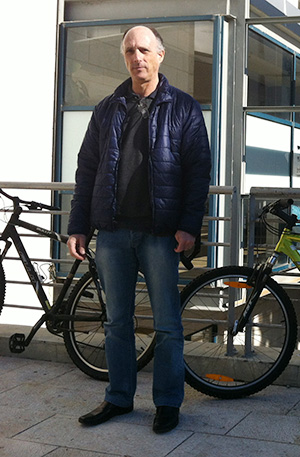Jacobs Institute scholars rethink building retrofits
By Anne Ju

For “green” building, starting from scratch with new construction is much easier than improving an existing building, and while there are ways to retrofit old buildings, an organized, comprehensive system for doing so doesn’t exist.
Ying Hua, assistant professor of design and environmental analysis in Cornell’s College of Human Ecology, and Abraham Yezioro, assistant professor of architecture and urban planning at the Technion - Israel Institute of Technology, are working together to solve this problem by developing a framework and methodology to streamline high-performance building retrofits.
The research collaboration started after a call for proposals from the Joan and Irwin Jacobs Technion-Cornell Innovation Institute at Cornell Tech in New York City. Last year, the Jacobs Institute granted seed funding for research projects that combined Cornell and Technion faculty expertise, with the objective of building and strengthening relationships among faculty of the two universities. Hua and Yezioro’s building retrofit project was recently granted a second year of support from the Jacobs Institute.

Their work includes a thorough study of existing building data collection and management methods, as well as mapping data sources related to building-energy performance. They are finding that these sources are varied, often nonexistent – especially for older buildings – and scattered among different stakeholders.
“Different people managing all that data are not necessarily talking to each other, which results in a situation where major retrofit decisions are made quite arbitrarily,” Hua said. Often, those decisions are driven “programmatically,” she said – for example, a university decides to upgrade an older building to accommodate a new program, and retrofit decisions are made around programmatic needs, and not necessarily in the best ways environmentally or financially.
For Hua, it is as important to communicate effectively with all parties involved – be they architects, engineers, building managers or occupants of the building – as it is to develop a physical process to optimize retrofits.
Hua comes to the project with a research interest in holistic building design processes; Yezioro develops computational sustainable design tools. His part of the project involves developing criteria to classify existing buildings for their retrofit possibilities and potential. This includes a building’s performance, energy consumption, site measurements and computer simulations.
The energy and environmental performance of existing buildings significantly falls behind that of new buildings, he said, due to complexities caused by aging, user influences and building life cycles.
“Existing building stock is significant in size. Moreover, it accounts for the majority of the entire building stock, hence a determining factor of the entire built environment’s energy consumptions and environmental impact,” he said.
The researchers are using a building from each of their respective campuses as case studies for their project. Hua chose Caldwell Hall on the Cornell campus in Ithaca, and Yezioro, the Humanities and Arts building on the Technion campus in Haifa, Israel. Caldwell Hall was built in 1913, and no electronic drawings of it exist – just scanned blueprints, many of which do not represent the building in it current form. It’s these kinds of challenges that the project is trying to address, Hua said.
An important consideration in their research is compatibility with the Building Information Modeling (BIM) protocol, an industry-standard digitization method for physical and functional characteristics of buildings. The researchers envision their tools as a list of data inputs for which customizable software could be designed to make retrofitting decisions easy and cost-effective.
Beyond data mapping and case studies, the researchers are also conducting focus group interviews with building occupants to inform their data gathering. Hua calls this the “human dimension” of building design processes. Their retrofit tools will seek to integrate the “user perspective.”
“When people think about retrofits, they think about building systems,” Hua said. “Very rarely do we think about the occupants who will be using that building. Nor do we ask, ‘Are they happy? What could be improved?’”
This year, Hua and Yezioro will continue work on their building case studies and will also conduct retrofit scenario comparisons and optimizations.
Media Contact
Get Cornell news delivered right to your inbox.
Subscribe